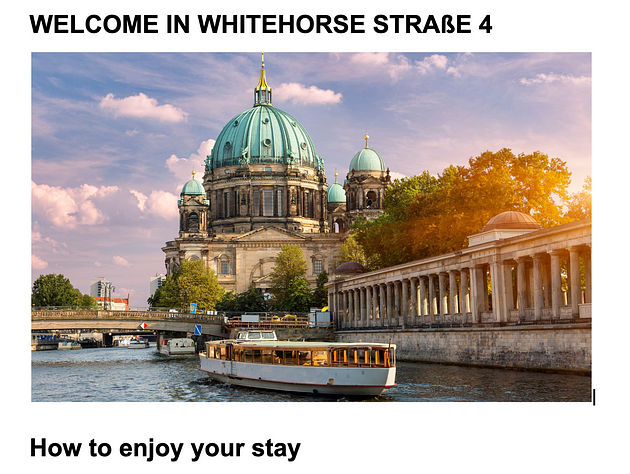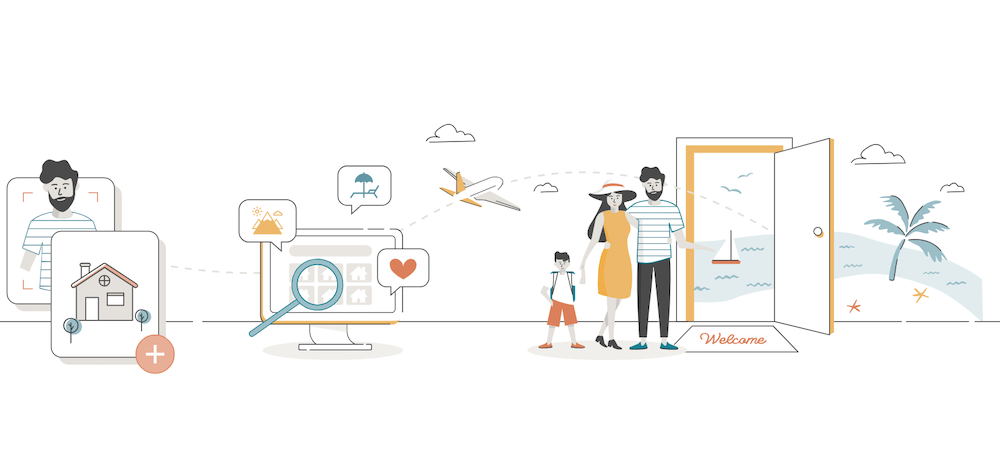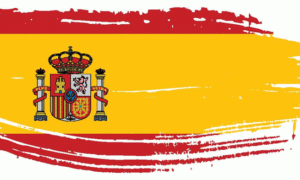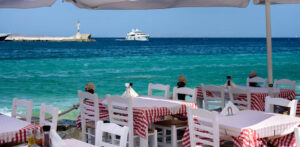(Editor’s note: This is Pt. 1 of Maryna Kryvko’s deep dive into how a home swap works, and how swapping can save you serious money on your next vacation.)
In one oIf my previous posts, I wrote about our experience with buying a house in Berlin, Germany. After we financed a mortgage loan and made most of the finishing touches to the house to make it habitable and comfortable, we needed a vacation (and felt like it was long overdue). However, all the extra expenses left us with no reserves: we invested all our savings into the house.
An “Aha!” moment came when my husband remembered that he had a coworker who used some website to find places to stay, offering his apartment in exchange. This scheme worked so well that he became a repeat customer of that service, purchasing a subscription and using it on a regular basis. He boasted that it was saving him a huge amount of money.
So, wouldn’t it be a good idea for us to also get some return on our investment?
I asked for the name of the website, and my husband sent me a link to LoveHomeSwap.com (which was recently merged with a similar service, HomeExchange.com). One had to register a house or an apartment and start looking for swaps.
The home swap is exactly what it sounds like — your family stays in someone else’s house. Their family stays in yours.
Registering a house
The initial step after registering is to create a listing describing your place. You list the number of rooms, beds, the types of beds, and the amenities. You describe the location, and of course, you upload the photos of your place.

There is also an additional verification process, consisting of uploading your ID and the documents that support your claim that you indeed live in this place.
Our search
I started my search in June, aware that it was very late for Europe because we were aiming for a vacation in August. Generally, one should book everything half a year before the planned date, or better still, a whole year. Then you will get much better prices, and flights, and the probability of hotels and rentals being available will of course also be much higher. But we were too busy, too tired, and too broke for that, and now we had less than two months to find something.
So I decided that beggars cannot be choosers, and therefore, we should go light on the filters.
Because of that, my search was very basic. What we could not compromise on was the number of bedrooms, since we wanted our child to sleep in a separate one. Other than that, I only wanted two things:
- Close to the sea. Any sea would do, the cold European seas included;
- It should either be within driving distance, or the flights for all would not break our budget.
That left us with several places in Europe (because the cross-Atlantic flights were definitely too expensive). Among those, I selected five candidates, choosing only the places that already had reviews on the website (only site members that had swapped with the place could leave reviews). The places were in Spain, Mallorca, France, and Greece.
I wrote nice messages to the owners, praising their homes, describing our family in the most favorable light, and proposing the dates we wanted (preferably Weeks 2 and 3 in August 2023).
I was hoping that at least some of the other responses would be more favorable, but several rejections came one after another and frankly, I didn’t blame them. Since I don’t love Berlin, I am not sure what can attract people to spend time in it, especially in a place that’s technically not even in Berlin itself. We have a good transport connection and we are also close to Potsdam where a lot of beautiful palaces and parks are, but we’re not directly in the thick of things.

However, in the end, I got a hit.
This was a home in Dunkirk, France, and the family seemed to be experienced in swapping homes because they were prepared to go directly from one swap to another. I knew nothing about Dunkirk, except what I got from the namesake movie. Basically, I knew that a lot of people died on that beach.
Not the best recommendation, if you ask me.
But it was the only place that said yes, and after talking with my husband, we agreed to the exchange. After the initial back-and-forth via the website, I exchanged phone numbers with the hostess and we continued being in touch via WhatsApp, to have a quicker way of communication.
The preparation
The HomeExchange website has a lot of information about preparing for an exchange as a host. What we were interested in were several questions:
Where do we put our stuff?
• The recommendation is to clear the space a bit and leave some hangers and drawers empty for your guests so that they can settle in comfortably. You don’t need to remove or hide all your things.
• My husband, however, was really paranoid about this rule, so he swiped our home, putting everything that we didn’t immediately need into the garbage bin (or at least in the closet). I got rid of all the unused toiletries, cosmetics, and personal items that hadn’t been used for some time; others were either needed for the journey or also went into the closet. We had two wardrobes in our bedroom and squeezed all the clothing that we weren’t taking with us into one, leaving the other completely empty. All personal items were swept from the tables and shelves; the guest rooms’ wardrobes were emptied, too.
• I thought my husband was too extreme, but when we arrived at the house, we saw that the owners did a very similar thing. They didn’t empty the wardrobes, though — only some shelves, but they hid everything personal behind closed cupboard doors or drawn closet curtains. They also did a complete swipe of the bathrooms, leaving just shampoo, soap, and shower gel outside and putting everything else into cupboards. The message was obviously “that other stuff is off limits”, and of course, we respected that.

How do we explain house rules to the guests?
There’s a welcome booklet that you need to write. This needs to contain information about the house location, transportation options, how to check in and check out, and other practicalities.
That’s how the website describes it:.
Think about the information your guests will need immediately. Each house or apartment has its own specificities: WIFI code, water heater, air conditioning, heating, swimming pool, or waste sorting… All this doesn’t seem too complicated for you but your guests will be more than happy to learn how it works as soon as they arrive. It is always useful to create a usage sheet or a video for “high tech” equipment (television, video games, etc.) and household appliances (washing machine, tumble dryer, dishwasher)
If you have specific house rules, that’s the place for them, too. For example, we have kitchen counters made of natural wood and they easily stain, so we were asking the guests to please use the coasters that we bought for the purpose, and wipe any spills as soon as possible. You might have other pet peeves, or perhaps plants to water, or a cat to feed at certain times.
What do we need to provide?
Put fresh bed linens on the beds and leave enough clean towels to last the guest’s family, preferably while they are staying. If the place has a washer/dryer, they of course can do a wash themselves, but they should have at least one change of everything at check-in.
What to do with the food in the fridge?
This is what the website recommendation has to say:
In the kitchen, we recommend throwing away perishable food and leaving enough food for your guests to make their first meal (milk, eggs, bread, butter, coffee, and tea, for example). Add a little note saying “help yourselves” so they know it’s for them.
How do we organize the key exchange?
The website proposes several ways to do that, namely:
• Wait for your guest/host to arrive and exchange keys in person.
• Ask a neighbor or a person you trust to welcome your guest and give them the keys.
• Hide the keys in a secret safe place.
• Send the keys via mail.
• Set the digital key lock and send the code via email to your exchange partner.
We intended to drive off before our guest family arrived because it was a long drive and we needed a head start. So what we did was buy a key safe on Amazon, the one with a combination lock.
The other family chose another path; the one key that was to unlock their house came to us in a simple snail mail. So, weirdly enough, we never met each other.
Coming up: On our way to Dunkirk
––––––––––
Read more from Maryna here in Dispatches’ archives.

Maryna Kryvko
Maryna Kryvko is a software developer in Germany. Maryna also writes a programming blog to share her knowledge. She sometimes speaks at conferences, though being an introvert, writing comes more naturally. Maryna says she’s not a professional writer but writing is something she likes, “and I think I can do it pretty well.”














